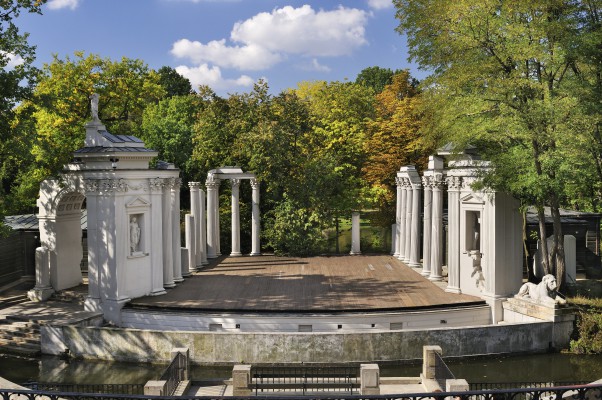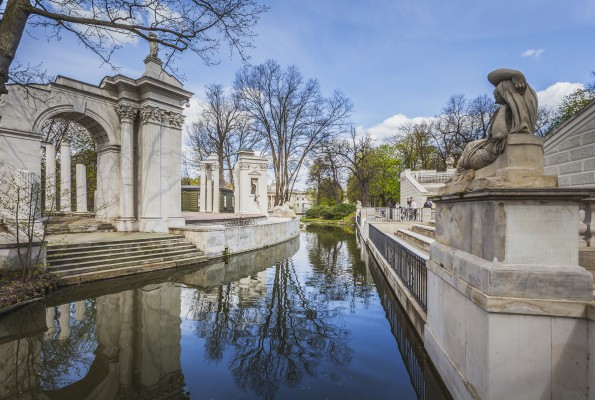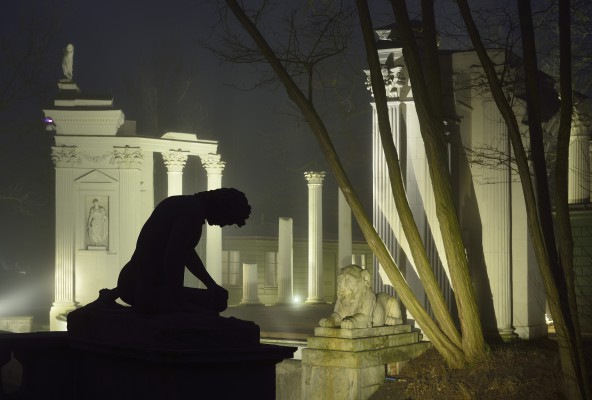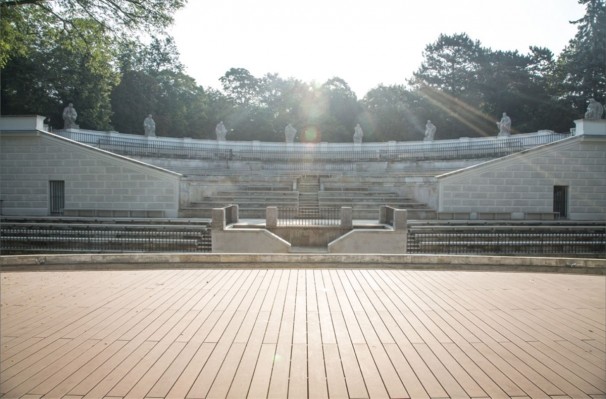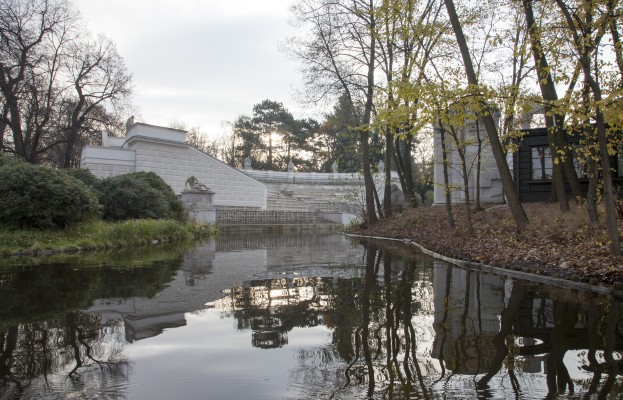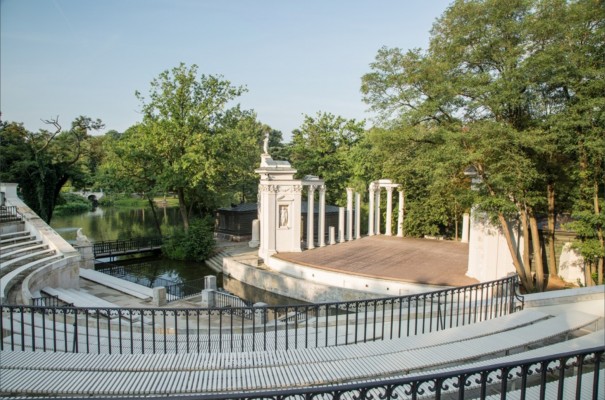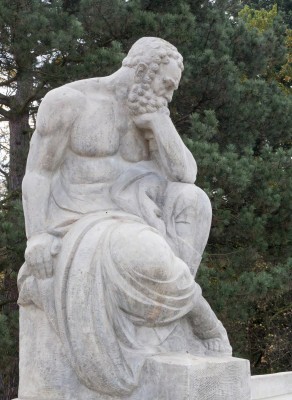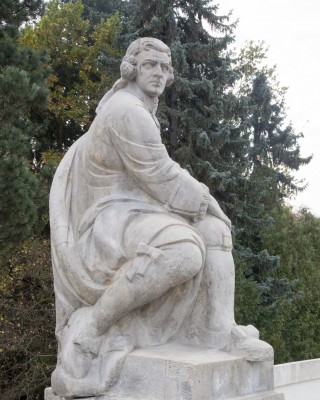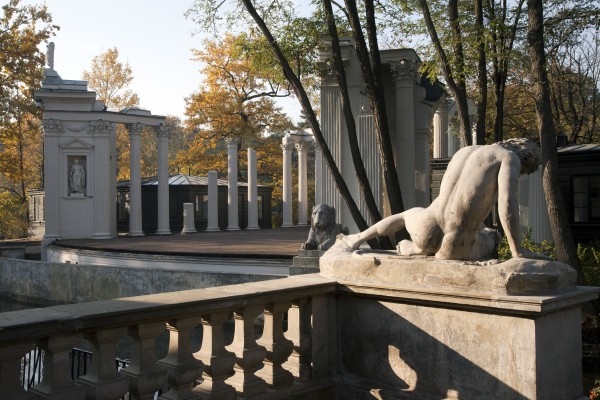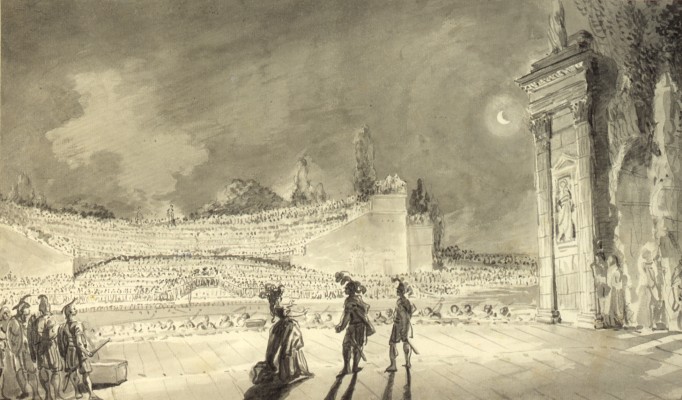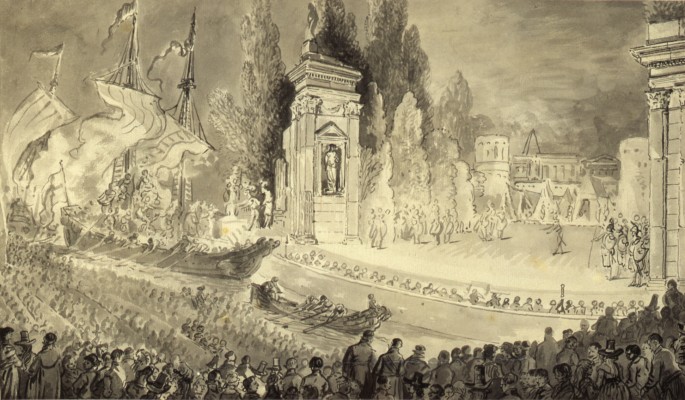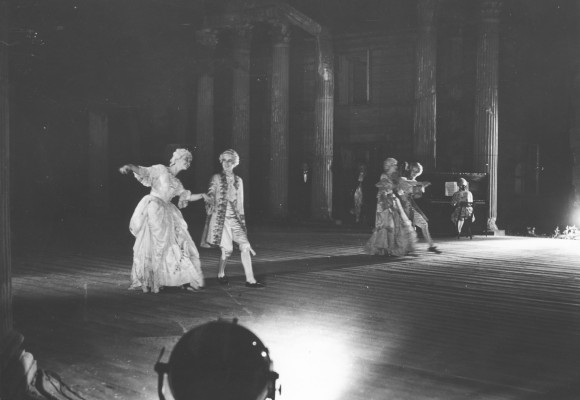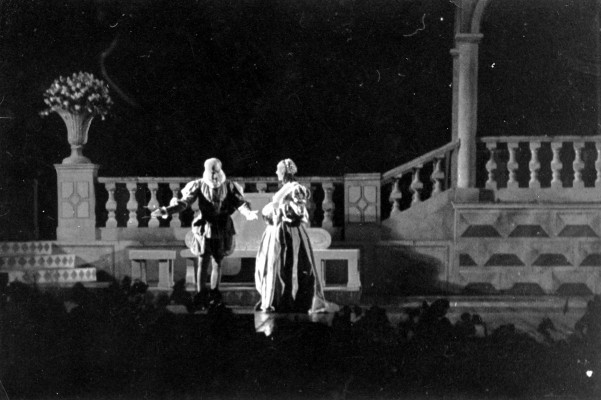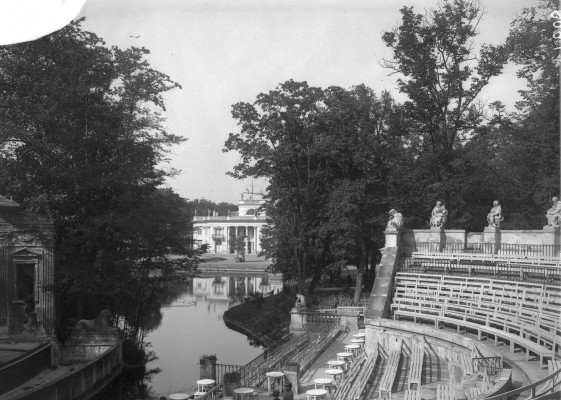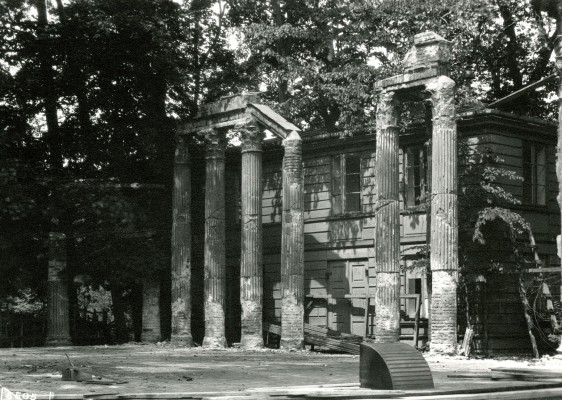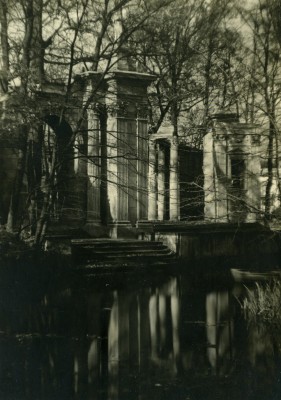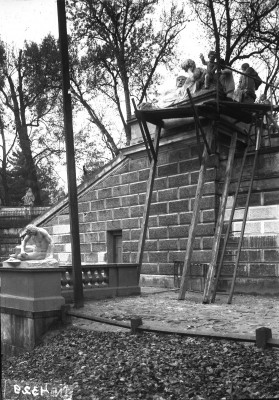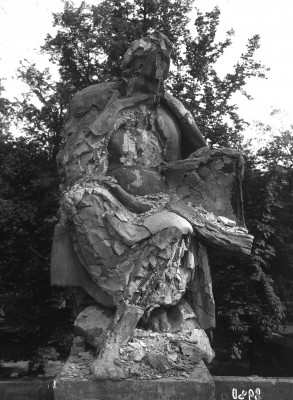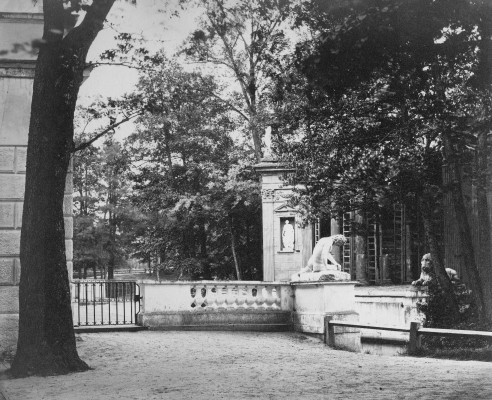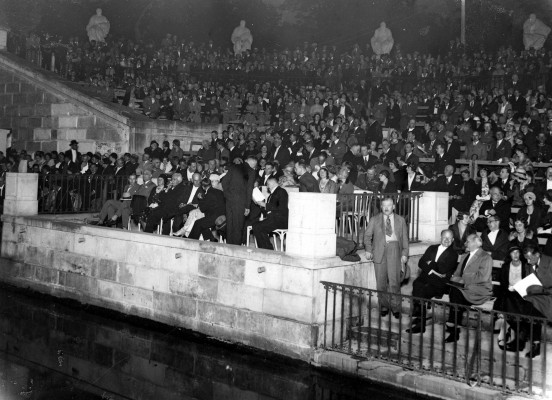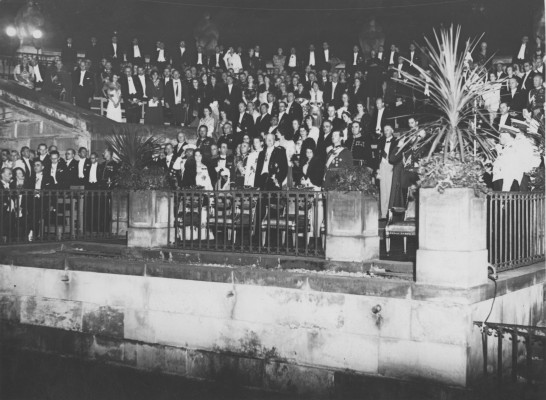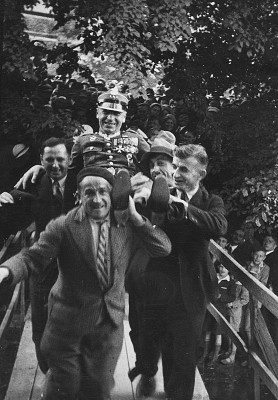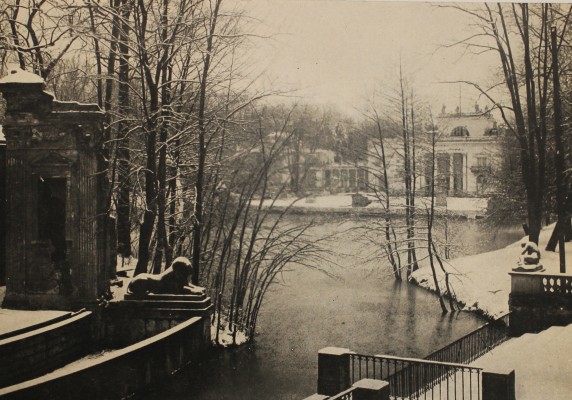
AMPHITHEATRE
The Amphitheatre at the Royal Łazienki stands out from other European structures of this kind. It combines the motif of ancient ruins with the function of an open air theatre.
Modelled on ancient Roman theatres, it is also an open summer garden theatre built in the early modern era. It is apparently the only eighteenth-century theatre of this type in Europe. The Amphitheatre, situated close to the south pond – the stage is on an island – acquired its present day appearance in the years 1790–93. It was designed by royal architect, Johann Chrystian Kammsetzer, who came from Dresden. Earlier, in the 1780s, an earthen amphitheatre, which was covered with a canvas roof supported on poles, stood on the ground.

The Amphitheatre is a semi-circular, stone auditorium, connected to the scene through a water channel. The scene is surrounded from three sides by a composition comprising typical elements of Roman architecture with artificial features of decay through the passage of time, which makes up a beautiful background for the ballets performed in the theatre, often based on mythological themes. Actors arriving in the theatre on boats would enter the stage through the gate on the left side. This type of permanent setting made the spectators feel as if they were in Greece or Italy; it followed the contemporary European trend of using elements of Ancient ruins in architecture.
historical event
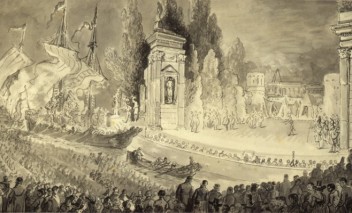
Amphitheatre’s Opening
The Amphitheatre was intended for large performances for almost a thousand spectators. Its grand opening was held on the anniversary of the election of King Stanisław August, which took place on 7 September 1791. At the time, a historical ballet entitled Cleopatra was performed. The plot featuring sea battles was particularly suitable for a setting near water, which allowed to include scenes with boats.

In the times of Stanisław August, the attic of the Amphitheatre’s auditorium was decorated with sixteen statues of prominent playwrights. However, they were made of a material that has deteriorated with the passage of time. That is why in the 1920s, the statues were removed, and today in their place stand eight sculptures of poets made by Stanisław Jakubowski. They appear as if they were watching the performance from the last row – together with the audience.
